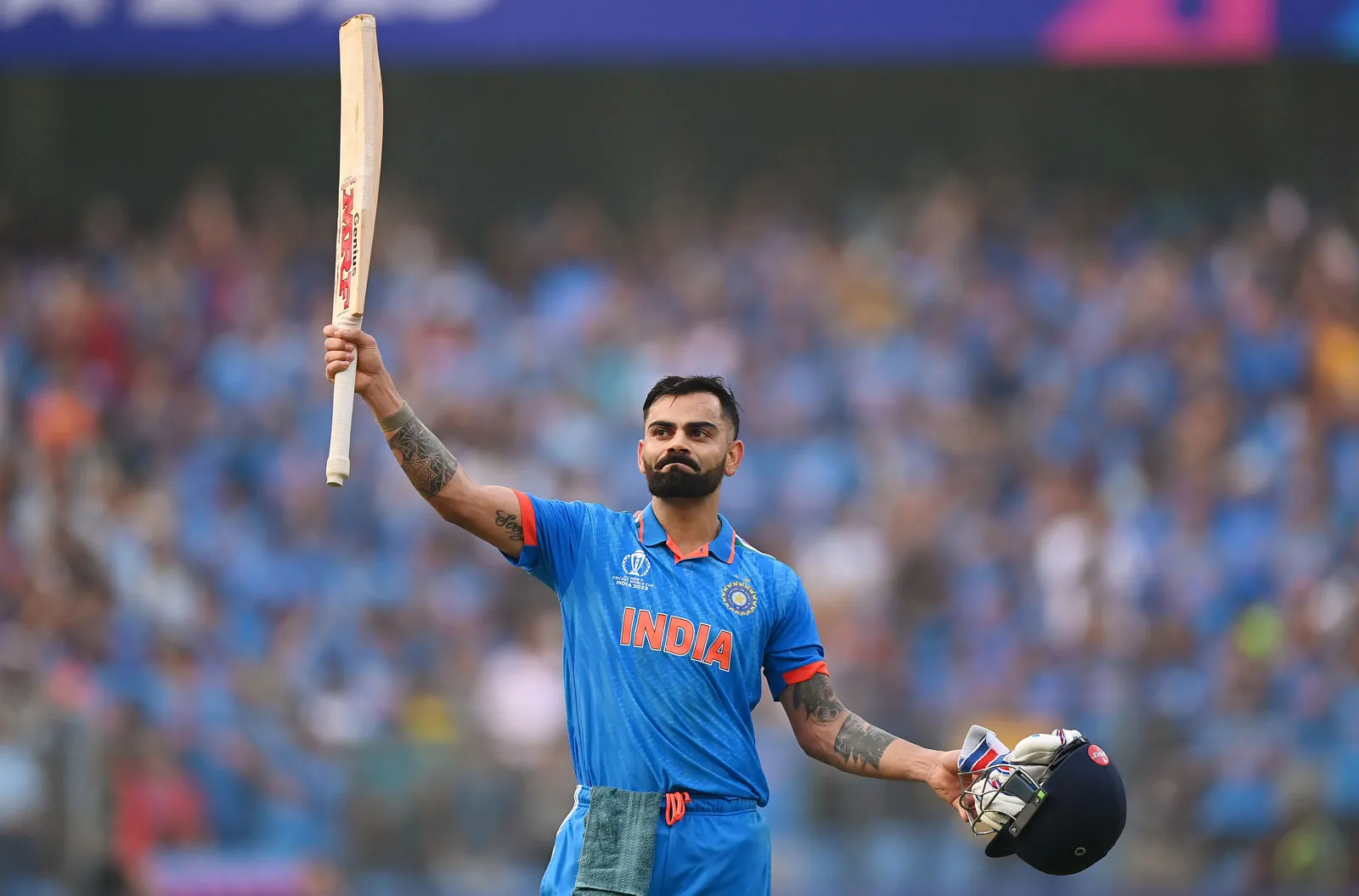In the midst of the rain-affected Kanpur Test between India and Bangladesh, a familiar debate has resurfaced. The weather, delays due to subpar stadium facilities, and the use of Langurs to chase off monkeys highlight the ongoing concerns around the infrastructure and professionalism in some Indian Test venues. This has rekindled the question: Should India limit Test matches to just five primary centers, as suggested by Virat Kohli in 2019?

This article revisits Kohli’s argument and dives deeper into whether India should emulate the model of countries like Australia and England or stick with its broader distribution of Test venues.
Virat Kohli’s Proposal: The Case for Five Test Centres
When Kohli first voiced his opinion in 2019, it sparked a significant conversation among fans and cricketing experts alike. His suggestion was clear: India should host Test matches at only five key venues. Kohli, then captain of the Indian Test team, felt that doing so would help preserve the integrity of Test cricket and enhance the viewing experience for fans and players alike.
Kohli’s Argument for Predictability
According to Kohli, the consistency of playing in five centres would ensure that the teams, both Indian and foreign, know exactly what to expect in terms of pitch conditions, crowd support, and overall environment.
“We’ve been discussing this for a long time now. In my opinion, we should have five Test centres. Teams that are coming in should know, we are going to play at these five centres, these are the pitches we’re going to expect.”
This predictability, according to Kohli, would enhance the home-field advantage for India. He pointed to the experiences of Indian teams traveling abroad, where they know the conditions of venues like the Oval in England or the MCG in Australia. Kohli believed a similar system in India would not only create more anticipation around Test matches but also deliver a better quality of cricket.
Enhancing the Spectator Experience
Kohli also emphasized the importance of fan culture in Test cricket. He argued that focusing on iconic cities like Mumbai, Kolkata, and Bengaluru would increase the crowd turnout and foster a stronger connection with fans.
“You want to keep Test cricket alive and exciting.”
He suggested that having five prominent Test centres would bring more attention from TV audiences as well. Viewers would remember the famous matches at these locations and be excited to watch the next ones, much like Melbourne’s Boxing Day Test or the Lord’s Test in England.
Why Limiting to Five Centres Makes Sense
Better Facilities and Infrastructure
One of the major arguments in favour of Kohli’s proposal is the quality of facilities. Stadiums in cities like Mumbai and Bengaluru have much better drainage systems, spectator stands, and overall infrastructure compared to some lesser-known venues. In Kanpur, for instance, delays caused by poor drainage became a talking point after rain washed out a large portion of the Test. Limiting venues to established cities could prevent such issues, ensuring that matches aren’t compromised by inadequate facilities.

Moreover, weather patterns would be easier to predict with a smaller set of cities. This is crucial because rain delays in India can severely affect the excitement and momentum of Test cricket. By focusing on fewer cities with reliable weather patterns, India could deliver more uninterrupted Test matches, keeping fans engaged.
Boosting Cricket’s Appeal in Larger Cities
By concentrating Test cricket in cities that already have a rich history of hosting these matches, the Board of Control for Cricket in India (BCCI) could create an environment where Test matches are treated as premium events. Think of the buzz surrounding the Kolkata or Chennai Test, where fans turn up in droves, and compare that to a Test in a smaller city where the stands are half-empty.
This shift could potentially bring back the sense of grandeur that Test cricket deserves, with packed stadiums and lively crowds adding to the overall excitement.
Logistics and Ease for Players
For players, concentrating on five centres means fewer logistical hassles and more familiarity with the playing conditions. Kohli’s argument hinges on the idea that playing in established venues gives the home team a distinct advantage, and more preparation time on familiar pitches.
With fewer venues to worry about, the BCCI could also maintain the quality of pitches more consistently, allowing for better-prepared matches.
The Other Side: Why India Shouldn’t Limit Itself to Five Venues
While Kohli’s argument sounds compelling, it’s important to recognize that India isn’t Australia or England. The geographical and demographic makeup of the country is vastly different, and limiting Test matches to just five centres might do more harm than good.
A Country as Diverse as India Needs More Exposure
Unlike Australia and England, India is a vast country with over a billion people. England can afford to have five or six Test venues because its land area is roughly the size of Tamil Nadu, and Australia has a significantly smaller population. For India, which has played Tests in 18 venues, limiting matches to five states would mean catering to just 38% of the population.
For a cricket fan in Assam or Manipur, it becomes almost impossible to travel to cities like Kolkata or Mumbai just to watch a Test match. In a cricket-obsessed nation, alienating rural and smaller-city fans is not the solution. Instead, the BCCI should focus on improving the infrastructure in these smaller venues.
Expanding the Reach of Cricket
Cricket isn’t just for the metro cities, and Test cricket especially needs to reach all corners of India if it is to remain relevant. Kohli’s suggestion of limiting the format to a select few cities could further widen the gap between urban and rural cricket cultures.
In fact, it’s in these smaller cities where future cricket stars may be watching their first live Test match. Cutting them off from the experience doesn’t democratize the game. Building the sport’s culture in underrepresented areas like Jammu, Kerala, and Sikkim will ensure that cricket, especially Test cricket, remains a truly national sport.
Economic and Social Ramifications
There’s also a larger socio-economic issue at play. If the BCCI restricts Test cricket to just five venues, it risks creating an elitist culture where only a few state associations reap the benefits of hosting. This could create imbalances in how the game is developed and supported across the country.

Furthermore, a big cricketing win in a smaller venue can often ignite a passion for the sport in that region. Denying these cities the chance to host Test cricket might stunt the growth of local talent and fandom.
Virat Kohli’s argument for limiting Test cricket to five key centres is understandable in its quest for quality and consistency. However, India’s unique landscape and population demand a more inclusive approach. Instead of narrowing down venues, the BCCI should aim to upgrade facilities across more stadiums while maintaining a rotation system.
By doing so, Test cricket can thrive both in established cities and newer ones, creating a more equitable and dynamic future for the game. After all, the heart of cricket lies in its ability to bring people together, no matter where they are from.

I am a writer with a passion for technology and gaming. I write about a variety of subjects, including Esports, Games, Shows, and Sports. I create engaging and informative content for Hiptoro.

